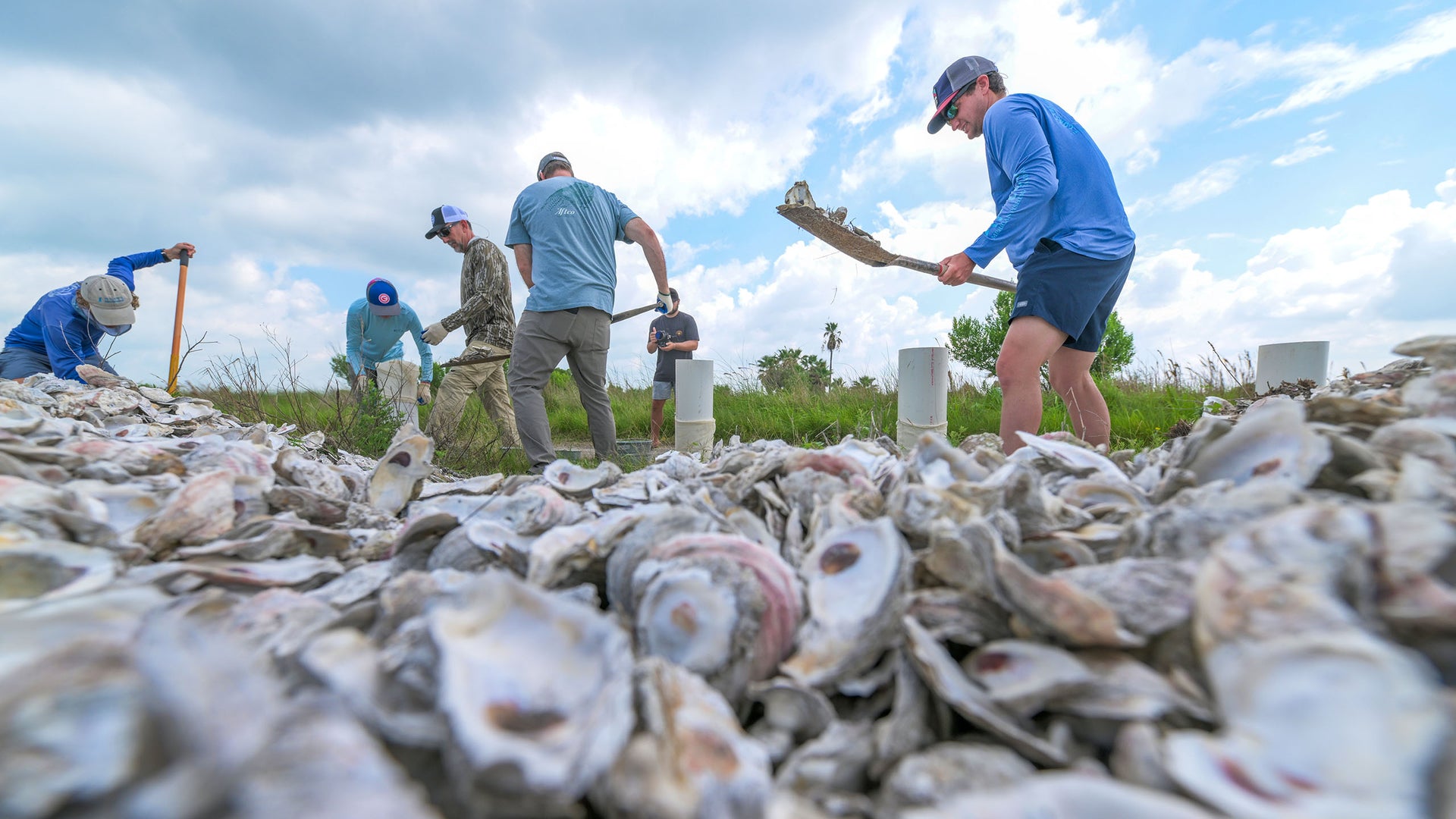Rebuilding Reefs: The Oyster Project

From the dinner table to the lab – "Rebuilding Reefs: The Oyster Project" helps tell the world about the great work CCA and its affiliates are doing to benefit anglers and beyond. This project is proven. This project is scalable. This project is part of the greater good of anglers, habitat and the critters that call it home.

Anglers cannot take fault for being wholly focused on the pursuit of fish, that one obsession bonding us all across the world’s seas. But behind every inshore specimen we pursue on conventional or fly stands an unsung hero, a keystone component of our uniting passion—the backbone of our fisheries no larger than the palm of your hand.

A single oyster is estimated to filter upwards of fifty gallons of water each day, removing unwanted nutrients to prevent algal blooms and purify our seas.
Their combined reefs are a critical component of the inshore landscape, buttressing our shorelines against threats from storm surges and erosion. They provide the critical infrastructure, protection, and resources needed to foster the early life cycles of fish and crustaceans, supporting a level of aquatic biomass far greater than seagrass beds or marshland. Oysters are a staple of our coastal economies, each delicious briny cup, crispy po boy, or steaming cluster nourishing our bellies and supporting entire communities. As things stand, only 15% of the world’s oyster reef habitats remain functional.
Commercial over-harvest, disease, pollution, and natural phenomena have collectively decimated oyster reefs, a costly and fateful first domino to fall. Fortunately, it isn’t too late, and concerned individuals and conservation groups along the Gulf Coast and Eastern seaboard are rallying to turn the tides of their precipitous decline.
The Lonestar State is making great strides to restore the formerly expansive reef systems along their coast, with the oyster shell recycling program “Sink Your Shucks” returning over three million pounds of shell to the water since 2009. Leftover shells from local restaurants are collected, cleaned, and cured before reintroduction, where oyster larvae naturally take up residence. The program’s success is due to an ongoing effort to educate the community and local restaurants on the importance of oyster reefs, relying on some 2,000 volunteers to revitalize the reefs one shell at a time.

Within Texas’ San Antonio Bay, the Coastal Conservation Association (CCA) is taking efforts further, developing a hatchery program where oyster larvae are cultivated and nurtured before introduction to CCA reef systems. From there, the larvae are monitored to track the success of their introduction, the reef’s ongoing developmental health, and ensuring their artificial introduction is offering the same benefits seen by natural reefs.

While scientists and conservations are utilizing sophisticated methods to reverse their decline, the future of oyster reefs depends on a collective effort at the grassroots level. The process begins with educating average consumers and committed anglers alike on their ecological benefit, and how their decline casts ripples far and wide. Next, oyster lovers need to advocate for coastal sanctuary sites and shell recycling programs, two critical components of protecting and rebuilding oyster infrastructure. Finally, never be afraid of getting your feet muddy, for there is no substitute for hard work, fresh air, and the curative nature of changing tides—We encourage you to volunteer at a local oyster project near you (www.joincca.org).

















